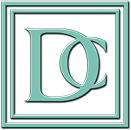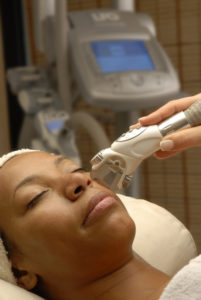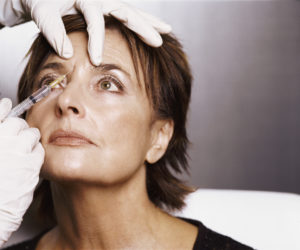
The Fight Against Aging: How to Be Preventive and Proactive in Your 20s, 30s, 40s, 50s and Beyond
Content provided by our sponsor: The Dermatology Clinic & Cosmetic Center.
Maybe you’re about to turn 38 and have noticed some discoloration and dullness in your skin. Or 50 is around the corner and those fine lines aren’t so fine anymore. Or you’re 22 and want to hang on to that fresh-faced look as long as possible. Whatever your particular skin concerns are at your age, one thing everyone can agree on is that they don’t want to look any older than they have to. And the good news is there are preventive therapies to stave off the effects of age and treatment options to correct it, no matter which stage of life you’re in.
To find out more about preventing or reversing age-related skin damage, we reached out to Drs. Nicole Harrell, Harry Burglass Jr. and Lori Byrd, all board-certified dermatologists with The Dermatology Clinic & Cosmetic Center. They shared some tips for protecting your skin now and repairing it in the future.
|
|
Develop Good Habits in Your 20s

Your 20s provide a great opportunity to prevent skin damage. The more you can do to take care of yourself now, the fewer treatments you’ll need to keep that youthful glow down the line.
The biggest thing you can do in your 20s to fight aging is to be aware of sun damage. “Sun damage is the leading cause of aging skin,” Dr. Harrell says. It causes wrinkles, volume loss, brown spots and broken blood vessels.” She recommends daily use of sunscreen with at least SPF 30 on the face, neck, ears and all areas of exposed skin. EltaMD and Revision Intellishade are two of her favorites.
 Dr. Harrell also recommends annual skin exams to check for abnormal moles and sunspots, and cautions against ever using tanning beds. Tanning-bed users “are 74 percent more likely to develop melanoma, and the UVA rays cause sagging skin and brown spots,” she notes.
Dr. Harrell also recommends annual skin exams to check for abnormal moles and sunspots, and cautions against ever using tanning beds. Tanning-bed users “are 74 percent more likely to develop melanoma, and the UVA rays cause sagging skin and brown spots,” she notes.
Another great tip for 20-somethings is to get in the habit of using anti-aging products regularly, especially those containing retinoids, vitamin C and peptides. “Topical retinoid is by far the most important component of any anti-aging regimen,” Dr. Byrd says. “Retinoids are synthetic vitamin A night creams that help improve the appearance of fine lines and wrinkles, help lighten dark spots, help with acne and oil production, and can actually prevent skin cancer,” she says. She recommends Dermatology Clinic Brightening Cream.
Vitamin C is an antioxidant that helps repair damage from ultraviolet rays and environmental pollutants, stimulates collagen production and lightens dark spots. Dr. Byrd recommends that her patients apply a good vitamin C treatment, such as Skinceuticals CE Ferulic, every morning before sunscreen. Also, a peptide serum like Neocutis Micro Serum can “help promote collagen production and lead to improvement in skin’s elasticity, tone and texture, leading to a tight and youthful glow,” she says.
Avoid Wrinkles and Spots in Your 30s

Your main problems in your 30s will be the start of wrinkles and brown spots. Luckily there are treatments to help. Relaxant treatments such as Dysport, Botox and Xeomin can be used to improve wrinkles on the forehead and around the eyes, Dr. Burglass says. “Although it may be surprising to hear of a 30-year-old getting a relaxant, this is actually the ideal time as this procedure works to prevent and smooth early wrinkles. Once wrinkles become etched into the skin they are more difficult to treat,” he says.
For spots you have three options: creams, lasers or peels. Brightening creams can reduce the appearance of dark spots, Dr. Burglass says. He likes Zo Melamin Skin Bleaching and Correcting Creme for most patients. It contains hydroquinone to aid in the brightening process. For patients who are pregnant or may become pregnant, he recommends a non-hydroquinone cream such as Zo Brightalive.
In addition to creams, Dr. Burglass uses the BBL laser on patients to reduce brown spots. “The BBL laser is a safe, noninvasive procedure, and has very little down time,” he says. He also likes chemical peels, such as the Vi Peel, to “help lighten dark spots and improve skin’s tone and texture.” Continued use of sunscreen is a must with all treatments.
Your 40s Are About Fullness

By your 40s, your skin may be sagging in some places and bulging in others. This is when people lose volume in their face from fat, muscle and bone loss from normal aging, and also have excess fat deposits in the neck, causing a double chin for some. The wrinkles and spots you started in your 30s only continue as well. You have many options to improve this, Dr. Harrell says.
For that sagging skin, a good filler like Restylane or Juvederm can “improve those deeper folds and grooves around the mouth and nose, and add fullness to cheeks and lips,” she says. Most fillers only require about 30 minutes to inject, with very little down time for the patient.
A microlaser peel is a noninvasive procedure that uses lasers instead of chemicals to give the patient a peel. “It helps to eliminate fine lines and wrinkles as well as give the skin a smooth, glowing appearance,” Dr. Harrell says.
Eye cream is a good investment in your 40s. Wrinkles in this area can make you look tired, Dr. Byrd says, and an effective eye cream can increase collagen production, tighten your skin, reduce fine lines and improve dark circles. Two she likes are Neocutis Lumiere Eye Cream and Revision DEJ Eye Cream.
Then there’s that double chin, which is another common concern for 40-somethings. Diet and exercise usually don’t help get rid of this stubborn problem at this age, so Dr. Byrd recommends Kybella. “Kybella is a natural substance that is used by the body to break down dietary fat. When injected into the area under the chin, it leads to destruction of fat and a noticeable decrease in fullness,” she says.
Your 50s and Beyond Are About Damage Control

Everything mentioned above can get even worse in your 50s, and this is especially true of wrinkles and sagging. At this point those wrinkles are likely “etched into” the skin, Dr. Burglass says. This can require a treatment plan consisting of relaxants, fillers and skin-resurfacing lasers. Lasers such as the Sciton Profractional and TRL laser are a great way to reduce the appearance of deep facial lines and wrinkles. Laser resurfacing is an in-office procedure performed by your dermatologist, typically with only four or five days of down time, he says.
Sagging in your 50s and beyond likely extends to the neck and jowls, not just the face. Exilis is a skin-tightening procedure that uses radio frequencies to deliver controlled heat to the skin. It can significantly improve sagging around the face and neck, involves minimal pain and can be performed on your lunch break, Dr. Burglass says. “Creams such as Revision Nectifirm can be used along with Exilis to enhance and maintain skin tightening,” he says.
Patients in their 50s and beyond also may start to experience hair loss. Dr. Burglass uses a new treatment called PRP (platelet rich plasma) to stimulate new hair growth. This procedure uses a patient’s own plasma derived from a blood draw. “The PRP is then injected in the scalp in a series of treatments and stimulates new hair growth and hair restoration,” he says.
If you’re concerned about winning the battle against aging, regardless of your age right now, come see the physicians at The Dermatology Clinic & Cosmetic Center. They’re happy to offer you solutions to your skin issues and help you maintain (or regain) your youthful glow.
Schedule an appointment today with the board certified dermatologists at The Dermatology Clinic & Cosmetic Center. They offer a wide range of treatments to help you protect your skin’s health and appearance.
|
|
|
